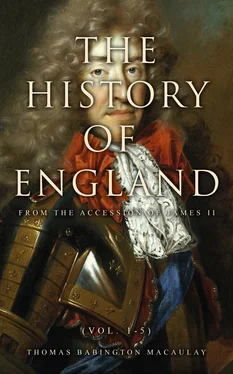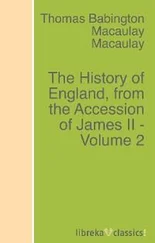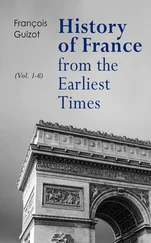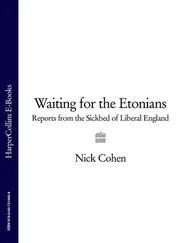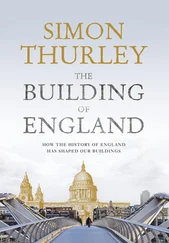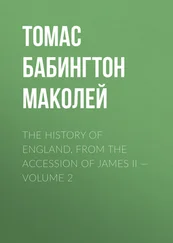98.Atkyne's Gloucestershire.
99.Magna Britannia; Grose's Antiquities; New Brighthelmstone Directory.
100.Tour in Derbyshire, by Thomas Browne, son of Sir Thomas.
101.Memoires de Grammont; Hasted's History of Kent; Tunbridge Wells, a Comedy, 1678; Causton's Tunbridgialia, 1688; Metellus, a poem on Tunbridge Wells, 1693.
102.See Wood's History of Bath, 1719; Evelyn's Diary, June 27,1654; Pepys's Diary, June 12, 1668; Stukeley's Itinerarium Curiosum; Collinson's Somersetshire; Dr. Peirce's History and Memoirs of the Bath, 1713, Book I. chap. viii. obs. 2, 1684. I have consulted several old maps and pictures of Bath, particularly one curious map which is surrounded by views of the principal buildings. It Dears the date of 1717.
103.According to King 530,000. (1848.) In 1851 the population of London exceeded, 2,300,000. (1857.)
104.Macpherson's History of Commerce; Chalmers's Estimate; Chamberlayne's State of England, 1684. The tonnage of the steamers belonging to the port of London was, at the end of 1847, about 60,000 tons. The customs of the port, from 1842 to 1845, very nearly averaged 11,000,000£. (1848.) In 1854 the tonnage of the steamers of the port of London amounted to 138,000 tons, without reckoning vessels of less than fifty tons. (1857.)
105.Lyson's Environs of London. The baptisms at Chelsea, between 1680 and 1690, were only 42 a year.
106.Cowley, Discourse of Solitude.
107.The fullest and most trustworthy information about the state of the buildings of London at this time is to be derived from the maps and drawings in the British Museum and in the Pepysian Library. The badness of the bricks in the old buildings of London is particularly mentioned in the Travels of the Grand Duke Cosmo. There is an account of the works at Saint Paul's in Ward's London Spy. I am almost ashamed to quote such nauseous balderdash; but I have been forced to descend even lower, if possible, in search of materials.
108.Evelyn's Diary, Sept. 20. 1672.
109.Roger North's Life of Sir Dudley North.
110.North's Examen. This amusing writer has preserved a specimen of the sublime raptures in which the Pindar of the City indulged:—
"The worshipful sir John Moor!
After age that name adore!"
111.Chamberlayne's State of England, 1684; Anglie Metropolis, 1690; Seymour's London, 1734.
112.North's Examen, 116; Wood, Ath. Ox. Shaftesbury; The Duke of B.'s Litany.
113.Travels of the Grand Duke Cosmo.
114.Chamberlayne's State of England, 1684; Pennant's London; Smith's Life of Nollekens.
115.Evelyn's Diary, Oct. 10, 1683, Jan. 19, 1685-6.
116.Stat. 1 Jac. II. c. 22; Evelyn's Diary, Dec, 7, 1684.
117.Old General Oglethorpe, who died in 1785, used to boast that he had shot birds here in Anne's reign. See Pennant's London, and the Gentleman's Magazine for July, 1785.
118.The pest field will be seen in maps of London as late as the end of George the First's reign.
119.See a very curious plan of Covent Garden made about 1690, and engraved for Smith's History of Westminster. See also Hogarth's Morning, painted while some of the houses in the Piazza were still occupied by people of fashion.
120.London Spy, Tom Brown's comical View of London and Westminster; Turner's Propositions for the employing of the Poor, 1678; Daily Courant and Daily Journal of June 7, 1733; Case of Michael v. Allestree, in 1676, 2 Levinz, p. 172. Michael had been run over by two horses which Allestree was breaking in Lincoln's Inn Fields. The declaration set forth that the defendant "porta deux chivals ungovernable en un coach, et improvide, incante, et absque debita consideratione ineptitudinis loci la eux drive pur eux faire tractable et apt pur an coach, quels chivals, pur ceo que, per leur ferocite, ne poientestre rule, curre sur le plaintiff et le noie."
121.Stat. 12 Geo. I. c. 25; Commons' Journals, Feb. 25, March 2, 1725-6; London Gardener, 1712; Evening Post, March, 23, 1731. I have not been able to find this number of the Evening Post; I therefore quote it on the faith of Mr. Malcolm, who mentions it in his History of London.
122.Lettres sur les Anglois, written early in the reign of William the Third; Swift's City Shower; Gay's Trivia. Johnson used to relate a curious conversation which he had with his mother about giving and taking the wall.
123.Oldham's Imitation of the 3d Satire of Juvenal, 1682; Shadwell's Scourers, 1690. Many other authorities will readily occur to all who are acquainted with the popular literature of that and the succeeding generation. It may be suspected that some of the Tityre Tus, like good Cavaliers, broke Milton's windows shortly after the Restoration. I am confident that he was thinking of those pests of London when he dictated the noble lines:
"And in luxurious cities, when the noise
Of riot ascends above their loftiest towers,
And injury and outrage, and when night
Darkens the streets, then wander forth the sons
Of Belial, flown With innocence and wine."
124.Seymour's London.
125.Angliae Metropolis, 1690, Sect. 17, entitled, "Of the new lights"; Seymour's London.
126.Stowe's Survey of London; Shadwell's Squire of Alsatia; Ward's London Spy; Stat. 8 & 9 Gul. III. cap. 27.
127.See Sir Roger North's account of the way in which Wright was made a judge, and Clarendon's account of the way in which Sir George Savile was made a peer.
128.The sources from which I have drawn my information about the state of the Court are too numerous to recapitulate. Among them are the Despatches of Barillon, Van Citters, Ronquillo, and Adda, the Travels of the Grand Duke Cosmo, the works of Roger North, the Diares of Pepys, Evelyn, and Teonge, and the Memoirs of Grammont and Reresby.
129.The chief peculiarity of this dialect was that, in a large class of words, the O was pronounced like A. Thus Lord was pronounced Lard. See Vanbrugh's Relapse. Lord Sunderland was a great master of this court tune, as Roger North calls it; and Titus Oates affected it in the hope of passing for a fine gentleman. Examen, 77, 254.
130.Lettres sur les Anglois; Tom Brown's Tour; Ward's London Spy; The Character of a Coffee House, 1673; Rules and Orders of the Coffee House, 1674; Coffee Houses vindicated, 1675; A Satyr against Coffee; North's Examen, 138; Life of Guildford, 152; Life of Sir Dudley North, 149; Life of Dr. Radcliffe, published by Curll in 1715. The liveliest description of Will's is in the City and Country Mouse. There is a remarkable passage about the influence of the coffee house orators in Halstead's Succinct Genealogies, printed in 1685.
131.Century of inventions, 1663, No. 68.
132.North's Life of Guildford, 136.
133.Thoresby's Diary Oct. 21,1680, Aug. 3, 1712.
134.Pepys's Diary, June 12 and 16,1668.
135.Ibid. Feb. 28, 1660.
136.Thoresby's Diary, May 17,1695.
137.Ibid. Dec. 27,1708.
138.Tour in Derbyshire, by J. Browne, son of Sir Thomas Browne, 1662; Cotton's Angler, 1676.
139.Correspondence of Henry Earl of Clarendon, Dec. 30, 1685, Jan. 1, 1686.
140.Postlethwaite's Dictionary, Roads; History of Hawkhurst, in the Bibliotheca Topographica Britannica.
141.Annals of Queen Anne, 1703, Appendix, No. 3.
142.15 Car. II. c. 1.
143.The evils of the old system are strikingly set forth in many petitions which appear in the Commons' Journal of 172 5/6. How fierce an opposition was offered to the new system may be learned from the Gentleman's Magazine of 1749.
144.Postlethwaite's Dict., Roads.
1145.Loidis and Elmete; Marshall's Rural Economy of England, In 1739 Roderic Random came from Scotland to Newcastle on a packhorse.
146.Cotton's Epistle to J. Bradshaw.
147.Anthony a Wood's Life of himself.
148.Chamberlayne's State of England, 1684. See also the list of stage coaches and waggons at the end of the book, entitled Angliae Metropolis, 1690.
Читать дальше
